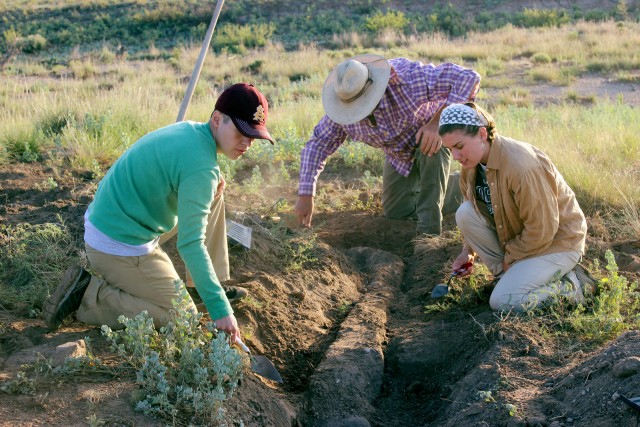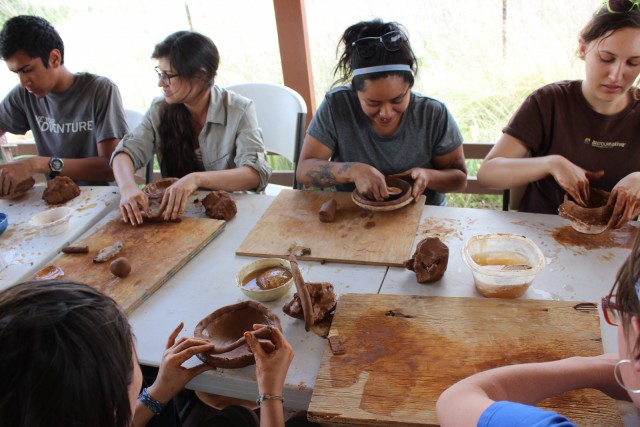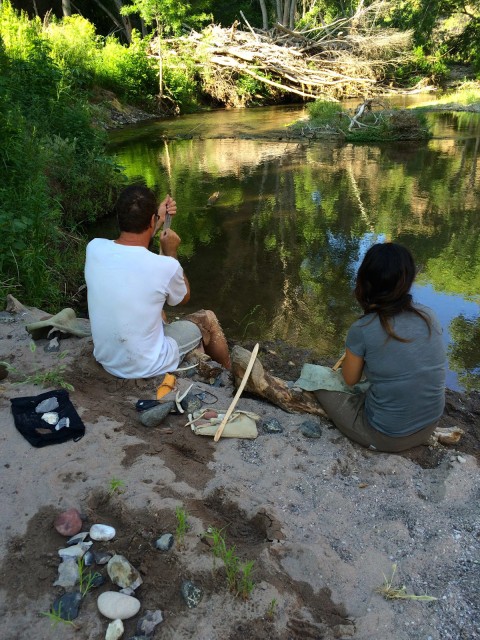- Home
- >
- Preservation Archaeology Blog
- >
- Necessary
Alisha Stalley, Northern Arizona University
In early February, I began the relatively short quest of finding a field school to attend. After receiving my acceptance letter from Karen Schollmeyer on behalf of Archaeology Southwest, I excitedly told my close friends and family, some of whom asked why it was so important and if it was “even necessary.” Spending a month in southwestern New Mexico digging in dirt was not their ideal summer plan, and the fact that it was mine must have been baffling. So why is it important? Is it even necessary?
I believe that it is. For those interested in archaeology, or another subfield of anthropology, I believe attending a field school can be an invaluable experience for gaining a deeper understanding of archaeology and human behavior, past and present. From attending an archaeological field school, one may expect to learn how to dig, screen, trowel, measure and map—always using the metric system as any sane person would do—as well as how to identify diagnostic artifacts for the region. This knowledge is imperative for archaeologists, as are the connections made with fellow students who share similar interests and with mentors who help by giving advice that may guide a path towards career resources for future endeavors.

With several friends also focusing on archaeology and attending other field schools, one can’t help but wonder, “How does my field school experience compare?” Because I can only speak from my perspective, my answer may seem biased, but I believe the Preservation Archaeology Field School has offered me and my fellow students plenty of learning opportunities and training.

In the relatively short amount of time I’ve spent in Mule Creek, I have gained experience and information through lectures, one-on-one training, and experimental archaeology, not to mention amazing trips to surrounding sites that are the archaeological representations of the people I wish to better understand. Better yet, I learned not only about excavating adobe, flaked stone, pottery, and tools, but also how adobe structures are made by helping to build one, how to better identify flaked stone by flintknapping, how pottery is made by making pottery, and the ways tools are made and used by…you guessed it, making and using them. To gain both perspectives side-by-side is a wonderful educational treat that I’m so excited to take part in.

Taking everything into account, my response to further questions on the importance of field schools will have certainly improved, as well as my understanding of archaeology and the kind of life and future it may lead to. So to anyone who may be curious about field school: Go for it! You’ll make friends and advisors that may last a lifetime. You’ll quickly learn the comfort of sleeping bags, the refreshment of cold, outdoor showers, the fulfillment of finding floors in your unit, and you will have plenty of hilarious and, sometimes, downright strange stories that will serve as entertainment for years to come. (Fellow archaeologists please share your field school stories, I know you’ve got ’em!)
Explore the News
-
Join Today
Keep up with the latest discoveries in southwestern archaeology. Join today, and receive Archaeology Southwest Magazine, among other member benefits.